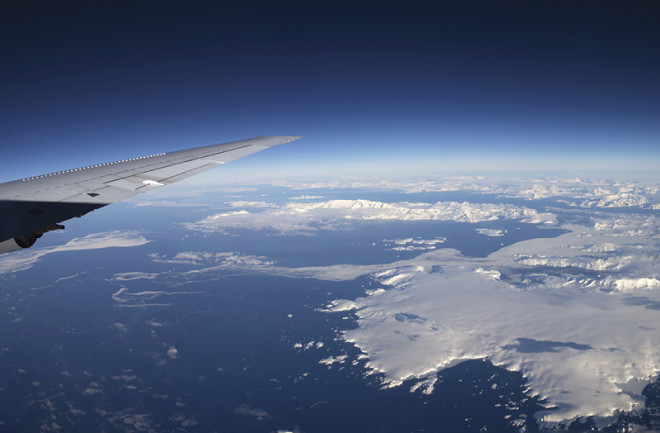“Terrain! Terrain! Pull up!”
The programmed alarm rings throughout the plane’s cockpit, announcing a fast-approaching rocky outcrop. Pilot David Fedors casually reaches out a hand and overrides the warning. Twisting the altitude knob to the left, he aims the plane down toward an endless expanse of white, gleaming in the midday sun. He levels it off at a cruising altitude of 1,500 feet.
NASA’s Airborne Laboratory is flying low over the West Antarctic Ice Sheet. Inside, a team of scientists is taking the temperature of a continent blanketed in 5 million square miles of ice, equivalent to about 60 percent of the planet’s freshwater.
Their instruments are zeroed in on the Amundsen Sea Embayment, a vast region rich in volcanoes, ice shelves and glaciers, some as big as Washington state. Here and across Antarctica, eons of storms have piled snow, inch by inch, layer by layer, until the ice was miles high. Glaciers deliver that ice from the inner reaches of the continent to the ocean, where massive frozen shelves float atop the water.

